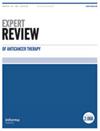NFYA激活的JARID2通过PI3K/AKT途径促进三阴性乳腺癌细胞的干性。
IF 2.9
3区 医学
Q2 ONCOLOGY
引用次数: 0
摘要
背景本研究旨在探讨Jumonji AT Rich Interacting Domain 2(JARID2)在调控三阴性乳腺癌(TNBC)干性中的作用及其机制。定量聚合酶链反应、Western 印迹和免疫组织化学检测了其表达。双荧光素酶报告基因和染色质免疫沉淀检测验证了结合。3-(4,5-二甲基噻唑-2-基)-2,5-二苯基溴化四氮唑和菌落形成试验检测了活力和增殖。球形成试验检测球形成效率。流式细胞仪检测 CD44+/CD24- 标记的干细胞。结果JARID2和核转录因子Y亚基α(NFYA)在TNBC组织中上调并呈正相关。敲除JARID2或NFYA可抑制磷脂酰肌醇3-激酶(PI3K)/蛋白激酶B(PKB/AKT)信号通路,从而抑制细胞干性。强化JARID2的表达可挽救NFYA敲除对PI3K/AKT信号通路和细胞干性的抑制作用。结论NFYA通过上调JARID2的表达和调节PI3K/AKT信号通路来促进TNBC细胞的干性,这表明JARID2是针对TNBC干细胞创新药物的潜在靶点。本文章由计算机程序翻译,如有差异,请以英文原文为准。
JARID2 activation by NFYA promotes stemness of triple-negative breast cancer cells through the PI3K/AKT pathway.
BACKGROUND
This study aimed to investigate the role of Jumonji AT Rich Interacting Domain 2 (JARID2) in regulating triple-negative breast cancer (TNBC) stemness and its mechanism.
RESEARCH DESIGN AND METHODS
Bioinformatics analysis examined JARID2 expression, prognosis, and transcription factors. Quantitative polymerase chain reaction, western blot, and immunohistochemistry detected expression. Dual luciferase reporter gene and chromatin immunoprecipitation assays verified binding. The 3-(4,5-dimethylthiazol-2-yl)-2,5-diphenyltetrazolium bromide and colony formation assay detected viability and proliferation. Sphere formation assay detected the sphere formation efficiency. Flow cytometry detected CD44+/CD24- -marked stem cells. A xenograft tumor model verified the effect of JARID2 in vivo.
RESULTS
JARID2 and nuclear transcription factor Y subunit α (NFYA) were upregulated in TNBC tissues and positively correlated. Knockdown of JARID2 or NFYA inhibited cell stemness by inhibiting the phosphatidylinositol 3-kinase (PI3K)/protein kinase B (PKB/AKT) signaling pathway. Enforced JARID2 expression rescued the suppressive effect of NFYA knockdown on the PI3K/AKT signaling pathway and cell stemness. Knockdown of JARID2 inhibited tumor growth and cell stemness in mice but was alleviated by concurrent overexpression of NFYA.
CONCLUSIONS
NFYA promotes TNBC cell stemness by upregulating JARID2 expression and regulating the PI3K/AKT signaling pathway, suggesting JARID2 as a potential target for innovating drugs that target TNBC stem cells.
求助全文
通过发布文献求助,成功后即可免费获取论文全文。
去求助
来源期刊
CiteScore
5.10
自引率
3.00%
发文量
100
审稿时长
4-8 weeks
期刊介绍:
Expert Review of Anticancer Therapy (ISSN 1473-7140) provides expert appraisal and commentary on the major trends in cancer care and highlights the performance of new therapeutic and diagnostic approaches.
Coverage includes tumor management, novel medicines, anticancer agents and chemotherapy, biological therapy, cancer vaccines, therapeutic indications, biomarkers and diagnostics, and treatment guidelines. All articles are subject to rigorous peer-review, and the journal makes an essential contribution to decision-making in cancer care.
Comprehensive coverage in each review is complemented by the unique Expert Review format and includes the following sections:
Expert Opinion - a personal view of the data presented in the article, a discussion on the developments that are likely to be important in the future, and the avenues of research likely to become exciting as further studies yield more detailed results
Article Highlights – an executive summary of the author’s most critical points.

 求助内容:
求助内容: 应助结果提醒方式:
应助结果提醒方式:


